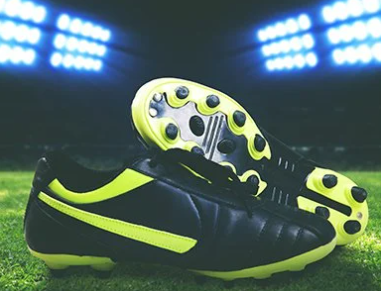Looking back at the history of midsole materials for racing running shoes, from EVA, which was a thing of the past, to TPU, which has been leading the fashion for many years, and now the hot PEBA nylon elastomer. Obviously, in the current research and development of midsole materials for sports running shoes, all sports brands are looking for materials with stronger rebound potential to pursue comprehensive improvements in cushioning, rebound, stability, and lightweight.
Nylon elastomers are not only widely used in sports equipment, consumer electronics, and waterproof clothing due to their ultra-lightweight, high-strength, flexible, durable, high-resilience, high-impact, low-temperature resistance, breathable, and permanent antistatic properties, but also used in medical and other fields, and has become the "superstar" of top racing running shoes.

PEBA is a block copolymer composed of a rigid polyamide block and a soft polyether block. The different ratios of the two components affect the performance of PEBA, so it has a wide range of applications. For sports equipment, it can be foamed into running shoe midsole, and be used as an embedded board for running shoes, football shoes, ski shoe rackets, various balls, etc. It can also be made into a waterproof film and used as clothing by taking advantage of its good air permeability.
The most acclaimed characteristics of PEBA are its lightweight and high elasticity. This material is extremely lightweight, reducing the burden on the feet during exercise while providing excellent elasticity and recovery. This unique combination enables athletes to achieve faster reaction speed and higher bounce strength in sports, especially in intensive running and jumping activities.
Compared with traditional EVA materials, PEBA performs excellently in terms of durability. Long term use will not lead to a significant decrease in material performance, which means that sports shoes can maintain their original performance after long-term high-intensity use. For athletes who frequently train or participate in competitions, this durability is very important.
The application of PEBA in sports shoes can also provide excellent energy feedback. Every step of walking or running, PEBA material can effectively absorb impact force and quickly restore shape, returning energy to the athlete. This energy feedback is crucial for improving the efficiency of athletes, especially in long-distance running or sports that require sustained power output.
Comfort: Key Consumer Needs
For ordinary consumers, comfort is an important factor in choosing sports shoes. PEBA, due to its superior elasticity, can provide excellent cushioning and comfort, which is particularly beneficial for those who stand or walk for long periods of time. By reducing foot pressure and fatigue, PEBA helps improve the overall shoe wearing experience.
PEBA has strong adaptability and can be easily combined with other materials or customized through different manufacturing processes. This provides a huge creative space for sports shoe designers to develop shoes that meet specific sports needs. PEBA can be adjusted according to needs in terms of weight, elasticity, and shape.
Comparing the elasticity of the two, the elasticity of TPU and PEBA is similar at room temperature. However, at lower temperatures, especially at subzero or even lower temperatures, PEBA materials are more elastic than TPU materials, which means that when the temperature changes, the properties of PEBA will change very little, and the properties are relatively stable.
The density of PEBA is lower than TPU. For ordinary runners, the difference in the density of these two materials is not very meaningful. Only for professional runners will have a relatively obvious impact. It is very important for athletes to save energy and improve their personal best.
TPU and PEBA have their own advantages and disadvantages. In general, TPU running shoes have a longer lifespan and a slightly lower price. PEBA running shoes are more elastic and lighter. The most typical TPU running shoe is Adidas’s boost, and the typical running shoe of PEBA is Nike’s vaporfly. The running shoes made of PEBAX material are more expensive than TPU, because the price difference between the two is relatively large.
These two materials are used by different brands and are used in sports such as basketball shoes, running shoes, hiking shoes, and football shoes. The biggest supporter of TPU is Adidas, and the biggest supporter of PEBA is Nike. Mizuno's running shoes also use PEBA material.
Tuntunplastic is a comprehensive company specializing in the production, sales and service of special engineering plastic, including PPSU, PSU, PES, PA12, PEEK, and PEBA, which are used in many fields. If you are looking for PEBA material suppliers, please contact us immediately.
By continuing to use the site you agree to our privacy policy Terms and Conditions.